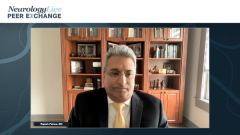
Challenges With OFF Episodes in PD
Rajesh Pahwa, MD; Robert A. Hauser, MD, MBA; and Laxman Bahroo, DO, provide insight on the challenges with motor and nonmotor symptoms of OFF episodes for patients with Parkinson Disease.
Episodes in this series

Stuart Isaacson, MD: These transitions between ON and OFF where patients might have a suboptimal ON, a partial OFF, and they don't have full benefit of their dose of medications—it can be even more complicated when you start to factor in something we haven't even mentioned, which is nonmotor symptoms during OFFs. There are nonmotor OFFs themselves, but many OFFs combine motor and nonmotor symptoms that may be heralded by nonmotor symptoms. How much do these challenges play a role, and how do you make your patients aware which symptoms might be OFF symptoms and which are not or are just part of symptoms of Parkinson?
Rajesh Pahwa, MD: In some patients, the nonmotor symptoms might be more challenging than their motor symptoms. Again, the issue comes down to this: unless the patient, unless the caregiver, or unless the clinician recognizes that these are nonmotor fluctuations that they are having, they're often trying to treat a symptom for what may not be a fluctuation happening. A classic example is panic. Some patients, when they go OFF, have panic attacks. Here people are being given benzodiazepines for the panic attack rather than trying to eliminate their OFF time. Same thing getting cognitive issues during their OFF time. We could go on and talk about all the different OFF symptoms which are nonmotor, whether it's anxiety, whether it's depression, whether it's apathy, whether it's going to the urinary frequency. Any of these symptoms can become a challenge. Imagine a Parkinson patient being in the OFF state who cannot get up and walk and they have to go to the bathroom every 5 minutes because they have this urge to urinate. Well, again, it's not a urological function where sending them to a urologist is going to help them but trying to eliminate their OFF time is what would be needed then.
Robert A. Hauser, MD, MBA: I just want to add that I don't know that we've completely figured this out in our field with regard to nonmotor OFFs. In my opinion, we're talking about times when dopamine is low in the brain. The only way we know that is either the patients in a motor OFF or you're somehow doing some sort of pharmacokinetic assessment. When people say, “Oh, there are fluctuations in a nonmotor symptom”—let's say anxiety. Somebody gets anxious around 10:00 AM and around 2:00 PM. Well, is that an OFF state or not? The only way we know is it makes some sense with regard to timing of levodopa, or they're in a motor OFF. I'd just say be cautious if you can't clearly associate it with something dopaminergic. Things fluctuate. People get fatigued late in the afternoon, for example. On the other hand, just as Raj was saying, if it comes with a motor OFF, think about treating it as a low dopamine state and trying to reduce or eliminate that nonmotor symptom by smoothing out dopaminergic therapy just like you would a motor OFF.
Laxman Bahroo, DO: Absolutely. I like that idea of being able to correlate the 2 because there are times when patients will give you nonmotor OFF-like symptoms. Given the fact that the age of the Parkinson patient can correlate with other medical issues, one gets very concerned. I remember quite a few patients calling us and talking about difficulty breathing. If you're calling our office talking about difficulty breathing, chest pressure, my office and I will tell you, “this is the first time we're hearing about it. You need to go to the ER [Emergency Department]. This is something that needs to be evaluated, because if in your 60s, this could easily be a heart attack or another issue that's a cardiopulmonary issue.” I'll tell them the worst thing that can happen to you in this situation is that you get it caught early and you get it sorted out. What's the most embarrassing thing that'll happen to a patient? They go to the ER, they evaluate, they rule out cardiovascular issues, cardiopulmonary issues. They blame it as an issue of maybe nonmotor OFFs. We tell them that. They feel foolish for that time period, but it could have easily been something much more severe. I always point out to them that if you're going to have issues like this, I prefer to have you evaluate it. Especially somebody that gets diaphoretic with chest pressure or just diaphoretic for no reason. Go be evaluated. They come back to the office, they call us a few days later, we tell them, “OK, if that's not what it was, then it was a nonmotor OFF but I'd like to see some reproducibility with that.” In other words, somebody gets symptoms. They get shallow breathing towards the end of the dose that may be coupled with motor symptoms, but I want to see the reproducibility of those nonmotor features. I'm reluctant to blame it on multiple nonmotor features without a motor correlate, as both Raj and Bob had mentioned, because it concerns me that I'm not getting good reporting as much, or I'm concerned about other factors going on.
Rajesh Pahwa, MD: They improve after they take their dose. It's not only they have them, but the symptoms improve after their next dose of levodopa or whatever Parkinson medicine they're taking.
Transcript Edited for Clarity
Newsletter
Keep your finger on the pulse of neurology—subscribe to NeurologyLive for expert interviews, new data, and breakthrough treatment updates.
























